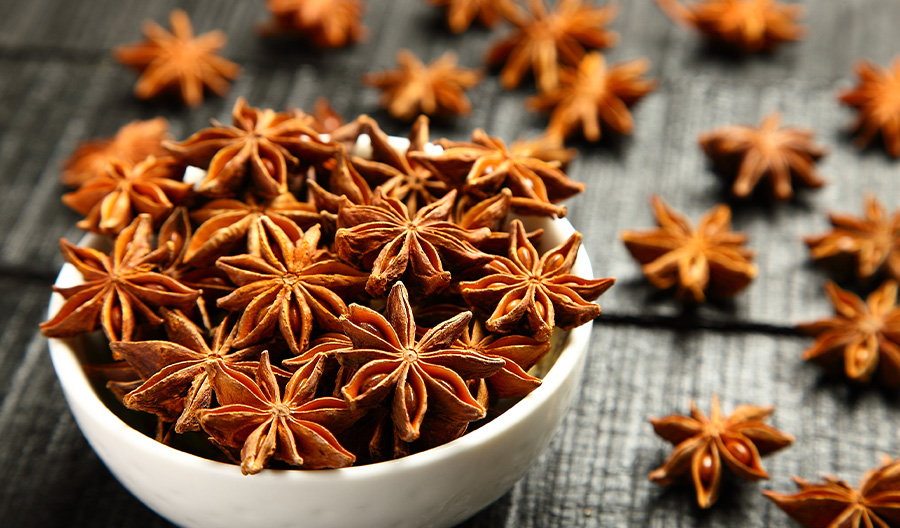You know how the dumpling is pretty much the great equalizer in the food world because nearly every culture seems to have its own version? The spirits world’s version of that is anise spirits. Once you start poking around, you realize there’s so much more than simply sambuca.
But first: What is anise? Also called aniseed, it comes from the Pimpinella anisum plant, whose long, stalky stems produce white flowers where the seeds form. It’s one of the oldest known culinary herbs and, according to “The Oxford Companion to Food,” hails from the Levant (a historical term referring to what’s now Israel, Jordan, Lebanon, Palestine and Syria) and was a Roman-era darling in desserts and other dishes. Pliny the Elder was a fan of its digestive charms.
And what about star anise? That’s actually the fruit of a type of tree from the magnolia family, native to southeastern China. But the resulting flavor is nearly interchangeable with aniseed because both contain the essential oil anethol, which gives that unmistakable (if sometimes polarizing) spicy, pungent licorice-like herbaceous flavor and the ability to take a liquid from clear to opaque with a drop of water or the addition of an ice cube.
Around the world, a multitude of countries and regions have each found its own spirituous anise expression. What follows is an overview.
Entire books have been written on the subject, poems composed, paintings and dances inspired, rumors spread. And indeed, the green fairy knows how to take over a party, exit early and leave everyone gossiping about her. Wormwood often gets the blame for the bad behavior of imbibers (so much so that the spirit was banned in the U.S. in 1912 and was only gingerly ushered back in during 2007), but in all likelihood, it was the spirit’s high ABV (anywhere from 45% to 74%—sure, that might make you hallucinate).
The dominant flavor of the green fairy is anise, certainly, but that’s not really doing the spirit justice. It’s utterly complex, and the best way to untangle the giddy mix of other botanicals is to drink it in the traditional method, pouring a little absinthe into a glass and slowly dripping water over a sugar cube atop a petite slotted absinthe spoon. France is absinthe’s ancestral homeland, but brands have popped up all over the world, from the dozens of elegant version made in France to American craft upstart offerings.

It’s easy to confuse anisette with, say, pastis or other anise-centered spirits, but it is indeed its own type of liqueur. In contrast to pastis, which can range from 40% to 45% ABV, anisette has a lighter touch, clocking in at a mild 25% ABV. Anisette is sweeter and uses aniseed in the distillation as opposed to the pastis method of macerating.
In Lebanon, anise-flavored arak (emphasis on the first “a”) is both literally and figuratively a communal spirit. “Arak runs through the veins of every Lebanese,” says May Matta-Aliah, a wine and spirits educator and Lebanese expat living in New York City. According to Matta-Aliah, arak is typically served from large carafes, often at long family Sunday gatherings for mezze at favorite local restaurants. Waiters will “break” the arak to your taste—that is, add water—which is often one-third arak to two-thirds water or at most half and half, because the spirit is so strong (over 50% ABV). A polite peculiarity of the drink: You never use the same glass more than once. “It louches and forms a slight film,” says Matta-Aliah. “They’ll put arak in your glass, add the ice and when you’re done will pour you a clean glass.” If you’re in Lebanon and a waiter offers you baladi, that’s the local homemade version, but labeled bottlings are abundant too.
For such a famed spirit, it was only in 2006 when ouzo won the origin-saving stamp of Greek authenticity. It was that year that it got PGI status (protected geographical indication) from the European Union, which, among other things, meant it could only be produced in Greece, and the brunt comes from the island of Lesvos. Its grape-based distillate (although grain can be used as well) is redistilled with aniseed, which gives it its distinctive fennel- and licorice-centric flavor.
France’s national café staple is a liqueur (which is to say, it contains sugar to sweeten it) made by macerating aniseed or star anise with licorice root—as opposed to distilling them, as other anise-centric spirits do—as well as other herbs depending on the brand. Other brands have even popped up outside of France, like the lovely English-made version that uses wild foraged flowers from the area in addition to the more typical star anise and licorice.
Turkey’s anise-flavored spirit is nicknamed lion’s milk for both its typical high ABV (around 45%) and its white, opaque appearance when cold water or ice are added, due to the oils from the anise, which is typical of other spirits in this category as well. Its base spirit is made from fresh or raisinated grapes. Because of high taxation on spirits in conservative Turkey, the robust bootleg booze market is alive and well and quite dangerous. Counterfeit raki with an extra dose of methyl has been the cause of illness and dozens of deaths over the years in Turkey. You’ll want to seek out one of the well-known brands, some of which have been experimenting with aging the spirit, such as Tekirdag’s Gold Series.
A little shot in your corto espresso, and you’ll sip one of Italy’s quintessential postmeal soothers. While other anise-flavored Italian liqueurs exist (namely anicione, sassolino, anisette and mistra), sambuca is easily the best-known outside of Italy for its super-sweet herby flavor from star anise, dill extract and elderflower. Its alcohol content runs around 38%. There are some brands that have a bit more complexity, with an herbaceous spiciness to counter the sweetness.

